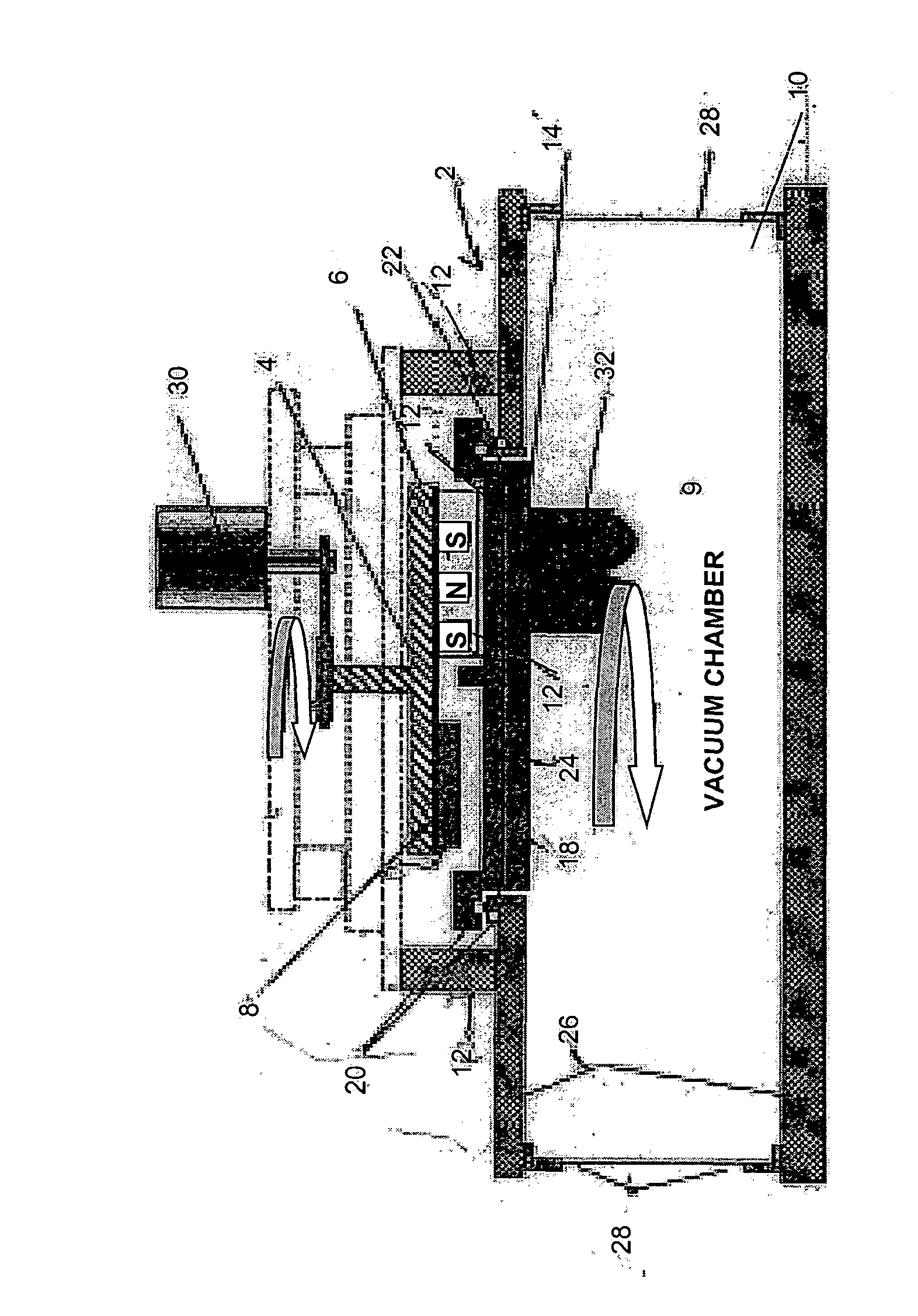Method of treating sputtering target to reduce burn-in time and sputtering target thereof and apparatus thereof
a sputtering target and target technology, applied in the field of dry treating a sputtering target, can solve the problems of inherently problematic characteristics, uniformity and burn-in time requirements of sputtering targets, nickel, chromium, cobalt, etc., and achieve the effect of reducing the uniformity of wafers
- Summary
- Abstract
- Description
- Claims
- Application Information
AI Technical Summary
Benefits of technology
Problems solved by technology
Method used
Image
Examples
example
[0020] Using the magnetron sputtering apparatus as described in the drawing, the magnet assembled was energized with 0.3 kW power for 8 minutes at 2.5 micron argon. Rs uniformity of a wafer surface was determined for several wafers. After the Rs uniformity of a wafer surface was determined, the target surface was machined by 0.05 mm to simulate a new target surface. The target surface was then treated by the sputtering plasma at low power as shown below. The results are shown in the following table.
Wafer / Rs UniformitySampleTreatment(1 Sigma %)1as above1.20%11 kW at 8 minutes1.04%2as above1.46%21 kW at 8 minutes1.28%3as above1.54%4as above1.33%
“As above” means 0.3 kW, 8 minutes, 2.5 microns argon.
[0021] Normally, the process condition for normal burn-in is an incremental step process to a maximum power of at least 8 kw for at least 3 hours. Using the novel treatment of this invention, the burn-in time necessary to qualify the target for use in production is reduced. The novel trea...
PUM
| Property | Measurement | Unit |
|---|---|---|
| power | aaaaa | aaaaa |
| power | aaaaa | aaaaa |
| power | aaaaa | aaaaa |
Abstract
Description
Claims
Application Information
 Login to View More
Login to View More - R&D
- Intellectual Property
- Life Sciences
- Materials
- Tech Scout
- Unparalleled Data Quality
- Higher Quality Content
- 60% Fewer Hallucinations
Browse by: Latest US Patents, China's latest patents, Technical Efficacy Thesaurus, Application Domain, Technology Topic, Popular Technical Reports.
© 2025 PatSnap. All rights reserved.Legal|Privacy policy|Modern Slavery Act Transparency Statement|Sitemap|About US| Contact US: help@patsnap.com


